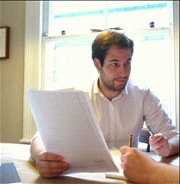Tutor HuntResources Physics Resources
Wireless Power Transmission
Introduction Only
Date : 24/11/2015
Electricity has been a huge field for research since its discovery, and in society today is greatly depended upon to power the majority of household possessions, public transport, public amenities etc. Electricity generation most commonly occurs in power stations through the burning of fossil fuels or nuclear fission where the energy is used to heat water which in turn powers a generator creating an alternating current. Other renewable methods such as hydroelectricity or wind power use renewable sources to convert kinetic energy of the water or the wind in to the rotational kinetic energy to power the generator. This electrical power is then managed in a station known as the grid and is then distributed via cables to sub-stations and is then further distributed by more cables to houses or places of need for use.
Due to the tedious nature of connecting devices with cables the demand for wireless connectivity over the last few decades has slowly increased. Inventions such as Wi-Fi or Bluetooth are two examples of technologies which have removed the need for cables and have made it possible for data transfer wirelessly between devices. Not only does this remove the physical tethering of cables it also allows for a more diverse range of connectivity and it has a positive effect on the environment with a reduced demand on cable production. Experiments involving wireless power transfer (WPT) were first carried out by Nikola Tesla between 1891 and 1904 using tesla coils and inductive coupling. He managed to transmit electricity across a stage in front of an audience to wirelessy power a light bulb. This report will discuss the theory for different methods of wireless power transfer before discussing the real world applications currently in use. The two categories of near field and far field transfer will be explained in detail expanding on the different methods within each category. References available on request.
This resource was uploaded by: Luke

